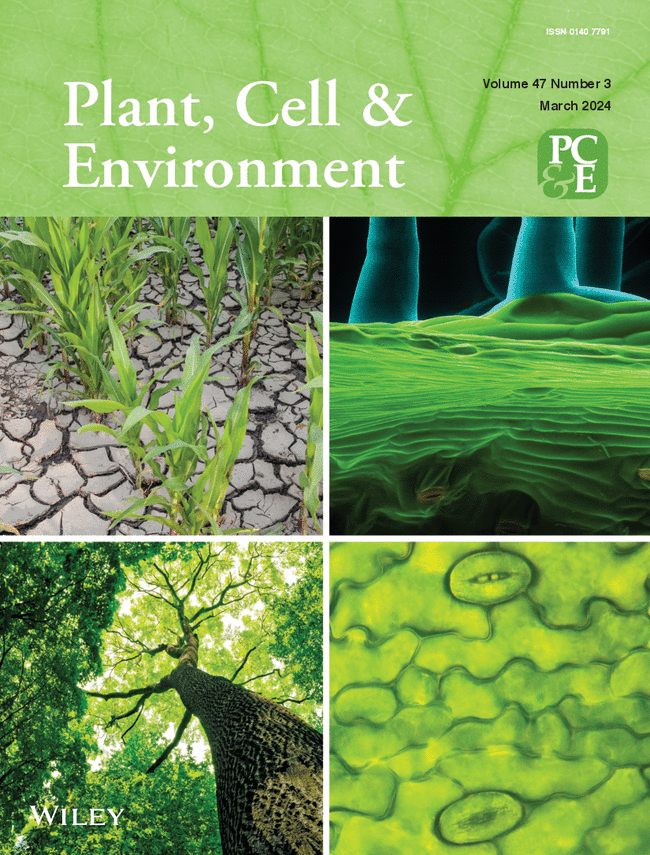Salivary Protein Sfapyrase of Spodoptera frugiperda Stimulates Plant Defence Response
IF 6
1区 生物学
Q1 PLANT SCIENCES
引用次数: 0
Abstract
Plants have developed various resistance mechanisms against herbivorous insects through prolonged coevolution. Plant defence responses can be triggered by specific compounds present in insect saliva. Apyrase, a known enzyme that catalyzes the hydrolysis of adenosine triphosphate (ATP) and adenosine diphosphate (ADP) into adenosine monophosphate (AMP) and inorganic phosphorus, has recently been identified in some herbivorous insects. However, whether insect salivary apyrase induces or inhibits plant responses remains poorly understood. In this study, we identified an apyrase‐like protein in the salivary proteome of the fall armyworm,蛙翅蚜唾液蛋白 Sfapyrase 刺激植物防御反应
植物在长期的共同进化过程中形成了各种抵御食草昆虫的机制。昆虫唾液中的特定化合物可触发植物防御反应。最近在一些食草昆虫体内发现了一种已知的酶,它能催化三磷酸腺苷(ATP)和二磷酸腺苷(ADP)水解为一磷酸腺苷(AMP)和无机磷。然而,人们对昆虫唾液apyr酶是诱导还是抑制植物反应仍然知之甚少。在这项研究中,我们在秋刺吸虫(Spodoptera frugiperda)的唾液蛋白质组中发现了一种类似apyrase的蛋白质,命名为Sfapyrase。Sfapyrase主要在唾液腺中表达,并在昆虫取食时分泌到植物中。在烟草和玉米中瞬时表达 Sfapyrase 可增强植物的抗性,减少昆虫的取食。通过 RNA 干扰敲除 Sfapyrase 会导致 S. frugiperda 的生长和取食量增加。此外,我们还发现,Sfapyrase 能激活茉莉酸信号通路,促进次生代谢产物(尤其是苯并恶嗪类化合物)的合成,从而增强对蚜茧蜂的抗性。总之,我们的研究结果表明,Sfapyrase 可作为唾液诱导剂,诱导玉米茉莉酸防御反应和抗虫苯并恶嗪类化合物的产生。这项研究为了解植物与昆虫之间的相互作用提供了宝贵的见解,并为制定创新的害虫管理策略提供了潜在的目标。
本文章由计算机程序翻译,如有差异,请以英文原文为准。
求助全文
约1分钟内获得全文
求助全文
来源期刊

Plant, Cell & Environment
生物-植物科学
CiteScore
13.30
自引率
4.10%
发文量
253
审稿时长
1.8 months
期刊介绍:
Plant, Cell & Environment is a premier plant science journal, offering valuable insights into plant responses to their environment. Committed to publishing high-quality theoretical and experimental research, the journal covers a broad spectrum of factors, spanning from molecular to community levels. Researchers exploring various aspects of plant biology, physiology, and ecology contribute to the journal's comprehensive understanding of plant-environment interactions.
 求助内容:
求助内容: 应助结果提醒方式:
应助结果提醒方式:


